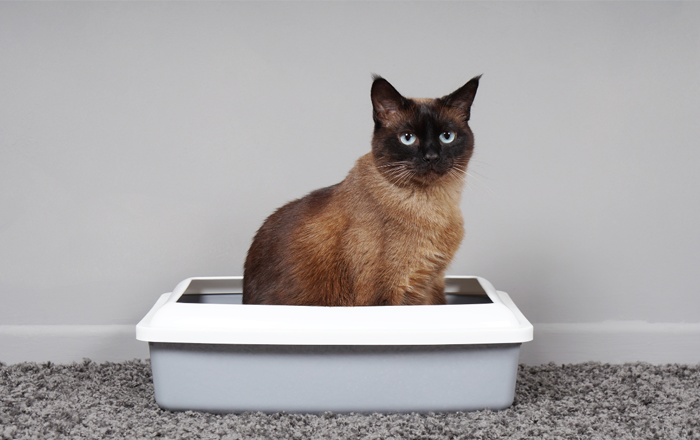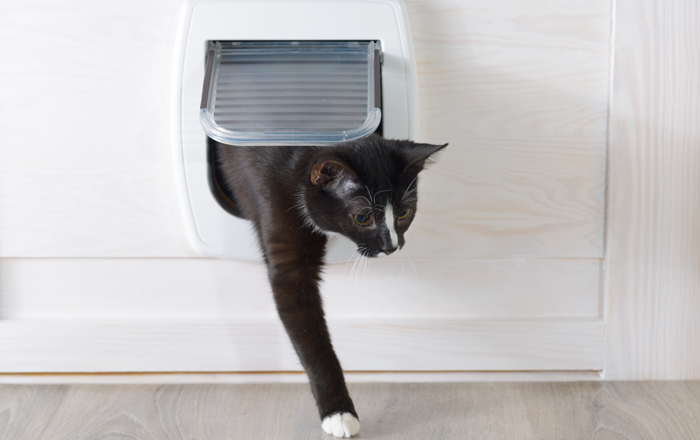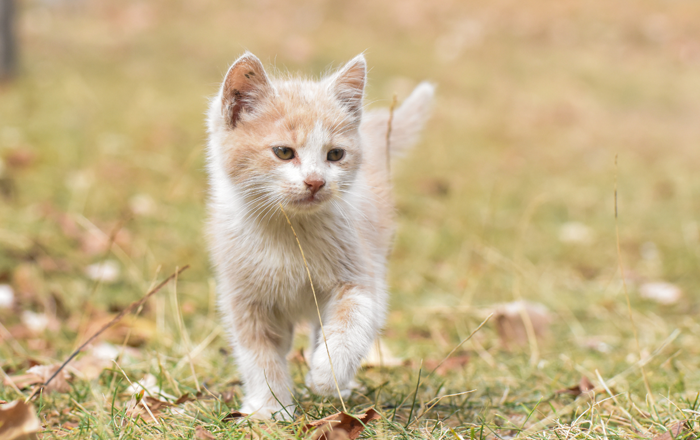With the right set up, house training your new kitten should be easy!
Here is a simple, step-by-step breakdown to help your gorgeous new pet learn how to toilet successfully in the appropriate areas.
1. Get the right set up
When you first bring your kitten home, they should be closed into one small room. A bathroom or laundry works well (the smaller the floor area, the better) - if it will be the permanent spot for a litterbox, even better! This gives your kitten less opportunity to toilet in random places.
Include a litterbox on the floor of this room. Cats naturally like to bury their waste, and the litterbox will provide the only suitable material in the small room to do so, so your kitten should choose to toilet there automatically. Once they’ve started, their smells will attract them back to the same spot again.
2. Choose the right litterbox and litter
Start with a simple open litterbox - don’t complicate things by getting a fancy one that hides the litter or that they have to climb into. Use unscented litter, and start with the non-clumping variety as it’s safer in case of ingestion with a young kitten. Some cats are very particular about the litter they like to go in, so if things aren’t going to plan then trial a different type of litter to see if that helps. Often it’s best to start with the same litter the breeder/rescue organisation was using for consistency.
Have a litterbox for every cat in the home, plus 1 extra at the start.

Mark Vette is a world-renowned Animal Behaviourist, Zoologist and Trainer. He brings together a unique combination of academic studies with 40 years of applied clinical animal behaviour consulting and treatment. Mark is a member of the International Association of Animal Behaviour Consultants. This article was written by Mark and the views expressed are his own.

3. Encourage litterbox use
As soon as you bring your kitten into your home, pop them in the litterbox before you do anything else. Place them there immediately after meals and naps also, if you get a chance.
If you see your kitten toileting in the litterbox, give them a little treat. If you see your kitten showing signs they might need to toilet (sniffing or crouching in a particular spot), take them straight to the litterbox. If you see your kitten toileting inside, calmly take them to their litterbox.
4. Be as meticulous as your kitten
Cats are meticulously clean creatures, and if their litterbox isn’t up to standard then they will likely choose somewhere else in the house to do their business.
Scoop out any clumps at least once a day; clean and dry the litterbox and change the litter once a week to keep things fresh.
5. Clean accidents effectively
If your kitten toilets somewhere inappropriate, clean the area thoroughly using a solution of 1/4 white vinegar mixed with 3/4 water to neutralise the smell. This will help prevent repeat toileting in the same area. You can purchase commercial cleaning products designed specifically for this use, but I find simple white vinegar works just as well.
6. Teach your cat to use a cat door
After the initial weeks of keeping your kitten indoors, you may wish to transition them to outdoor toileting. Do a few outdoor trips with your cat on a harness and long lead if possible, then it’s ideal to install a cat door so your cat has free access to toilet outside.
To teach your cat to use the cat door, start by taping it fully open and luring your cat back and forth through it with a high value treat. Leave it open for a few days, then lower it by 20% and again lure your cat back and forth through it. Continue lowering it every few days until your cat is using it easily. Microchip cat doors will prevent other cats from entering your home.


7. Transition to outdoor toileting
Ideally choose a toileting spot that has loose dirt, mulch, sand or something else they can use to cover up their eliminations as they like to do.
Place some of their used litter in this area, the smell will help attract them to toilet here. You can also include a little soil in the indoor litter box to help make the two toileting spots more similar.
When ready, take your cat to the new outdoor toileting spot - they may recognise the scent and use it immediately. If not, place them here after meals (and block access inside) to encourage them to use it.
8. Eliminate the litterbox (optional!)
Once your cat is toileting outside consistently, you can choose to get rid of the litterbox if you wish. Move it half a metre each day towards the cat door, then eventually place it just outside the cat door for a few days. If things are going well, you can then remove it altogether.
Good luck with this phase of your new kitten’s life!
Always consult your vet on the best way to look after your pet. And to avoid unexpected costs, make sure your pet is insured.
Have a look at our pet insurance plans to choose the right insurance plan for your pet.
